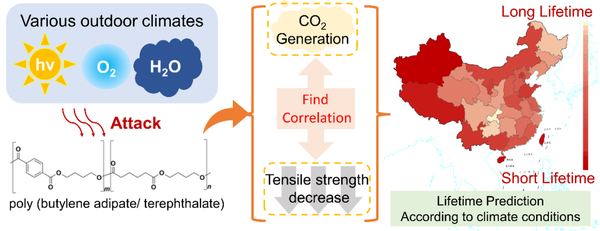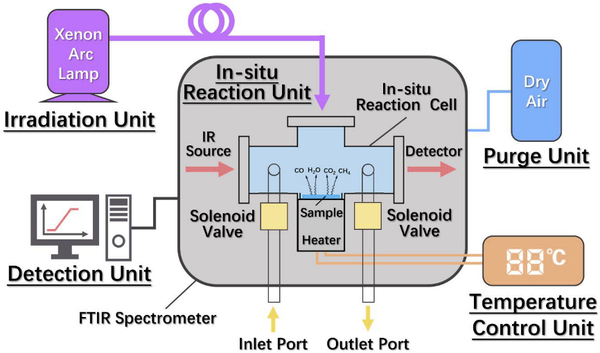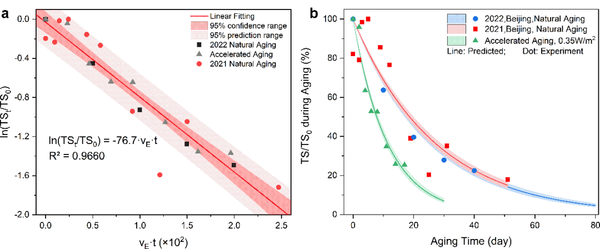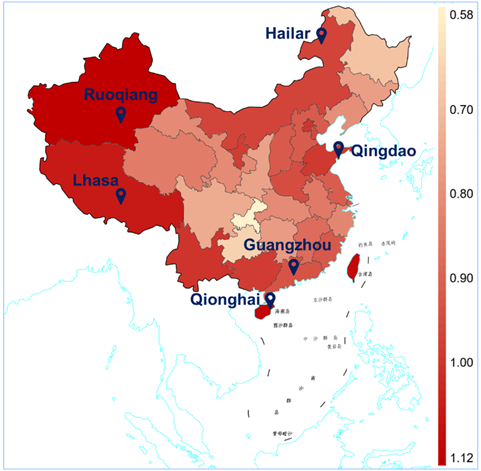Tsinghua University Team's New Method: Efficient and Accurate Prediction of PBAT Lifespan in Different Environments
The service life of polymer materials strongly depends on the environmental conditions under which they are used. Therefore, the rapid and accurate prediction of material service life under different environmental conditions is of great significance for the safe use of materials, stabilization modification, or reasonable recycling.

Recently, Professor Yang Rui's team from the Department of Chemical Engineering at Tsinghua University has established an efficient and accurate lifespan prediction method to quantitatively predict the lifespan of the biodegradable plastic PBAT in different climatic regions. This method utilizes the Comprehensive Aging Evaluation System (CAES) previously developed by the team (Figure 1), and establishes a lifespan prediction model through three steps:
(1) Through CAES, quickly test the CO2 generation rate of PBAT under different environmental conditions (irradiance, temperature, humidity) to obtain the quantitative relationship between degradation rate and environmental conditions, i.e., the environmental condition equation;
(2) Establish the correlation between CO2 production rate and tensile strength of PBAT with different aging degrees, i.e., the correspondence of aging states;
(3) Using the correspondence of aging states as a bridge, the environmental condition equations and the tensile strength-time relationship are combined to establish a life prediction model. This can predict the attenuation process of the tensile strength of PBAT over time under different environmental conditions (Figure 2), and quantitatively calculate the spatiotemporal distribution of the PBAT aging rate, drawing the expected life distribution map of China (Figure 3) and the monthly aging rate distribution map (Figure 4).

Figure 1 Structure Diagram of Comprehensive Aging Evaluation System

Figure 2 (a) PBAT lifespan prediction model fit effect test chart; (b) PBAT mechanical performance degradation prediction lines and actual measurement data under different aging conditions

Figure 3 PBAT Outdoor Aging Expected Lifespan Distribution Map

Figure 4 Distribution of the single-month aging rate of PBAT in six typical cities
https://doi.org/10.1016/j.jclepro.2025.145276
【Copyright and Disclaimer】The above information is collected and organized by PlastMatch. The copyright belongs to the original author. This article is reprinted for the purpose of providing more information, and it does not imply that PlastMatch endorses the views expressed in the article or guarantees its accuracy. If there are any errors in the source attribution or if your legitimate rights have been infringed, please contact us, and we will promptly correct or remove the content. If other media, websites, or individuals use the aforementioned content, they must clearly indicate the original source and origin of the work and assume legal responsibility on their own.
Most Popular
-

List Released! Mexico Announces 50% Tariff On 1,371 China Product Categories
-

Nissan Cuts Production of New Leaf EV in Half Due to Battery Shortage
-

New Breakthrough in Domestic Adiponitrile! Observing the Rise of China's Nylon Industry Chain from Tianchen Qixiang's Production
-

Dow, Wanhua, Huntsman Intensively Raise Prices! Who Controls the Global MDI Prices?
-

Mexico officially imposes tariffs on 1,400 chinese products, with rates up to 50%






